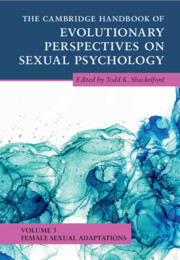Book contents
- The Cambridge Handbook of Evolutionary Perspectives on Sexual Psychology
- The Cambridge Handbook of Evolutionary Perspectives on Sexual Psychology
- Copyright page
- Contents
- Contributors
- Preface
- Part I Precopulatory Adaptations
- Part II Copulatory Adaptations
- Part III Postcopulatory Adaptations
- 13 Mate Retention
- 14 Shifts in Partner Attractiveness
- 15 Emotional Commitment
- 16 Female Sexual Jealousy
- 17 On Attachment and Evolution: Recounting the Story of, and Stories in, Attachment Theory
- 18 Maternal Filicide
- Index
- References
13 - Mate Retention
from Part III - Postcopulatory Adaptations
Published online by Cambridge University Press: 30 June 2022
- The Cambridge Handbook of Evolutionary Perspectives on Sexual Psychology
- The Cambridge Handbook of Evolutionary Perspectives on Sexual Psychology
- Copyright page
- Contents
- Contributors
- Preface
- Part I Precopulatory Adaptations
- Part II Copulatory Adaptations
- Part III Postcopulatory Adaptations
- 13 Mate Retention
- 14 Shifts in Partner Attractiveness
- 15 Emotional Commitment
- 16 Female Sexual Jealousy
- 17 On Attachment and Evolution: Recounting the Story of, and Stories in, Attachment Theory
- 18 Maternal Filicide
- Index
- References
Summary
Mate retention behaviours are intended to prevent a partner’s infidelity or defection from a relationship. In humans, women’s reproductive success is importantly affected by their ability to retain a partner. Furthermore, it is beneficial for a woman to retain a partner who is willing to protect and provide for her, her offspring, and her family, and who is a cooperative partner. Women can achieve this by deploying cost-inflicting or benefit-provisioning mate retention behaviours. The benefits women provide include care for their appearance: women enhance their appearance for their partners to embody male preferences for attractive and young mates. Appearance enhancement takes various forms, including cosmetic surgeries, application of makeup, fashionable clothing, use of perfumes, and specific movements aimed at displaying attractiveness. Women use these behaviours in all phases of a relationship, to attract a mate, to seduce and a mate, and to retain a mate. Appearance enhancement is, however, also subjected to monitoring and penalisation by other women in the context of intrasexual competition. Women therefore often opt for cosmetic procedures with moderate effects which do not emphasise their sexual appeal, but help increase their prestige and status. Other behaviours women use to retain a mate include the use of sexual behaviour and, in particular, oral sex and pretending orgasm. As hinted above, women also use mate retention behaviours that are costly for their partner, such as punishment of their partner’s infidelity threat or indirect aggression, including derogation of their partner or rivals. Despite women’s physical strength inferiority to men, physical aggression is sometimes performed by women against their partner, although it results in injuries less frequently than does male domestic violence. Women’s higher anxiety and, especially, their skill at identifying the mental states of others and responding with appropriate emotions, enable them to be efficient at indirect and manipulative mate retention behaviours. The same skills and abilities help women keep the partner satisfied and the romantic dyad functioning as long as the relationship remains beneficial for the couple.
Keywords
- Type
- Chapter
- Information
- Publisher: Cambridge University PressPrint publication year: 2022



